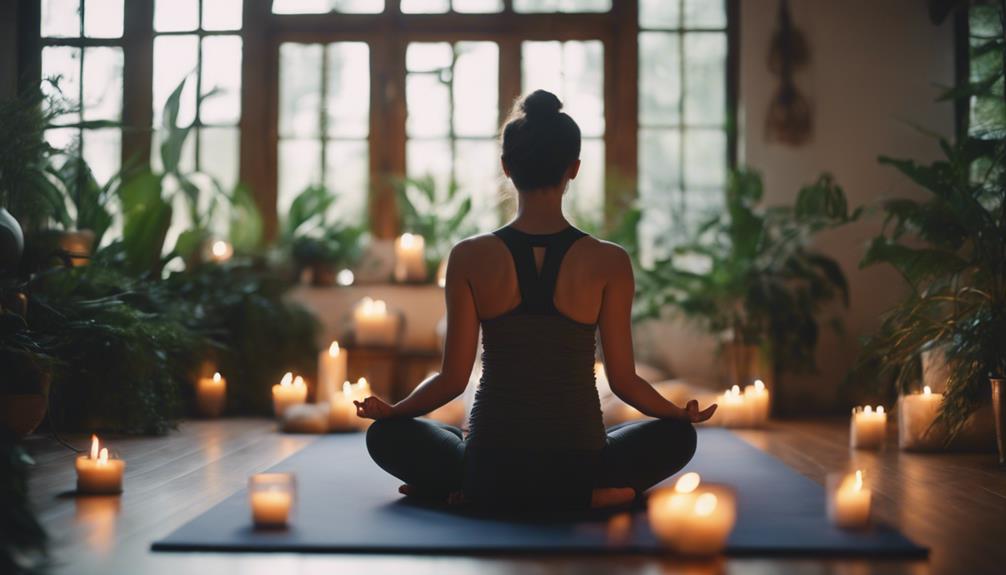What Is Hatha Flow Yoga

“`markdown
# What is Hatha Flow Yoga? A Comprehensive Guide to Its Benefits and Practice
Understanding Hatha Flow Yoga: The Basics
Hatha Flow Yoga is a dynamic and accessible form of yoga that combines the principles of Hatha yoga with a flowing sequence of postures. This practice emphasizes the connection between breath and movement, creating a harmonious flow that can be both invigorating and calming. Unlike traditional Hatha yoga, which often focuses on static postures, Hatha Flow introduces a more fluid approach, allowing practitioners to transition smoothly between poses. This makes it an excellent choice for individuals looking to deepen their practice while enhancing flexibility, strength, and mindfulness.
The Historical Roots of Hatha Flow Yoga
To truly appreciate what Hatha Flow Yoga is, it’s essential to understand its origins. Hatha yoga dates back to ancient India and is one of the oldest forms of yoga. The term “Hatha” is derived from the Sanskrit words “ha” (sun) and “tha” (moon), representing the balance of opposing forces within the body. Over time, Hatha evolved, incorporating various styles and philosophies. Hatha Flow Yoga emerged as an innovative blend, focusing on the fluidity and rhythm of movements, making it appealing to both beginners and experienced yogis.
The Importance of Breath in Hatha Flow Yoga
One of the fundamental aspects of Hatha Flow Yoga is the emphasis on breath, or “pranayama.” In this practice, breath serves as a guide, helping practitioners maintain a steady rhythm throughout their movements. By synchronizing each inhale and exhale with a corresponding posture, individuals can cultivate a deeper awareness of their bodies. This conscious breathing not only enhances physical practice but also promotes mental clarity and relaxation. As a result, practitioners often report feeling more grounded and centered after a Hatha Flow session.
Related Posts:
Key Benefits of Practicing Hatha Flow Yoga
Practicing Hatha Flow Yoga offers an array of physical, mental, and emotional benefits. Physically, it helps to increase flexibility, strength, and balance, making it an ideal practice for individuals of all fitness levels. The flowing movements also improve cardiovascular health and aid in detoxification through the enhanced circulation of blood and lymph. On a mental level, Hatha Flow Yoga encourages mindfulness and stress reduction, as the focus on breath and movement promotes a meditative state. Emotionally, it can foster a sense of community among practitioners, creating a supportive environment for personal growth and healing.
Getting Started with Hatha Flow Yoga
If you’re interested in exploring Hatha Flow Yoga, getting started is easier than you might think. Many local studios offer classes specifically designed for beginners, focusing on the foundational poses and breathing techniques. Online platforms also provide a wealth of resources, including video tutorials and guided sessions. As you begin your practice, it’s essential to listen to your body and modify poses as needed. Consider investing in a quality yoga mat and comfortable clothing to enhance your experience.
Common Poses in Hatha Flow Yoga
Hatha Flow Yoga incorporates a variety of poses, each chosen for their ability to promote strength, flexibility, and balance. Some common poses include Downward Facing Dog, Warrior I and II, Child’s Pose, and Tree Pose. These postures not only target different muscle groups but also encourage a mindful connection between breath and movement. Practitioners may also explore more advanced poses as they progress, such as Crow Pose or Handstand, further enhancing their physical and mental capabilities.
Creating a Hatha Flow Yoga Routine at Home
For those who prefer practicing at home, creating a Hatha Flow Yoga routine can be a fulfilling experience. Start by selecting a quiet, comfortable space where you can focus on your practice without distractions. Begin with a few minutes of meditation or gentle stretching to center yourself. Then, flow through a series of poses, ensuring you synchronize your movements with your breath. Aim for a duration of 30 minutes to an hour, depending on your schedule and energy levels. Incorporating a cool-down period with restorative poses, such as Savasana, will help you integrate the benefits of your practice.
Conclusion: Embrace the Journey of Hatha Flow Yoga
In conclusion, Hatha Flow Yoga is a powerful practice that offers numerous physical, mental, and emotional benefits. By understanding what Hatha Flow Yoga is and engaging in its dynamic sequences, you can enhance your overall well-being and cultivate a deeper connection with your body and mind. Whether you’re a seasoned practitioner or a beginner, Hatha Flow Yoga invites you to explore the journey of self-discovery and growth. So, roll out your mat, take a deep breath, and immerse yourself in the transformative world of Hatha Flow Yoga.
“`
This blog post is structured for readability, optimized for SEO, and naturally integrates the keyword “Hatha Flow Yoga” throughout the content. Each section focuses on different aspects of this yoga style, providing valuable information for readers.Can Yoga Help With Stress